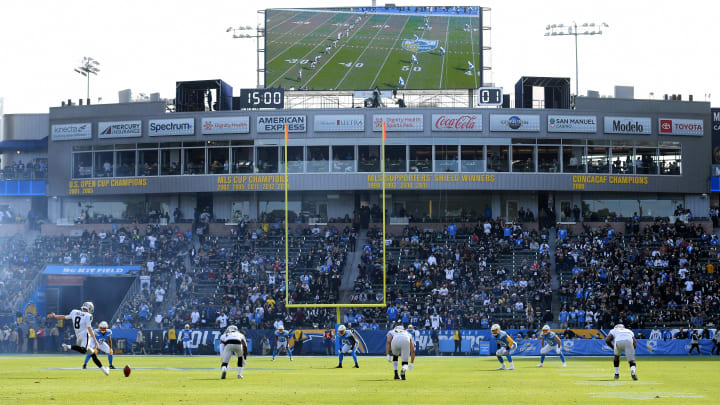NFL In-Person Attendance Hits 15-Year Low, And It's Obvious Why

This was a bounce-back season for NFL business. In terms of television ratings, every network that airs the league's games (except for NFL Network) posted its best numbers in years, a positive sign for both sides as negotiations for the NFL's next TV contracts ramp up.
However, gains in the Neilsen ratings come with a cost at the turnstiles. According to Sports Business Journal, NFL attendance dipped to its lowest point since 2004, with an average of 66,648 fans attending throughout the regular season. Teams hit especially hard have been the Los Angeles Chargers, who have struggled to fill their half-sized soccer stadium, as well as the soon-to-no-longer-be-Oakland Raiders, who suffered an attendance drop of 7.6 percent in their final season at the Coliseum.
Overall, the league's average attendance number dropped 0.7 percent from 2018's figure of 67,100.
Even the positive numbers are tinged with darkness. The Washington Redskins posted a 7.3 percent increase in attendance over 2018 at FedExField. However, that statistic is surely padded by the swathes of visiting team's fans who packed the stadium for each of the Redskins' eight home games, as we've documented throughout the season.
Is this a blip? After all, the NFL played four games in London this year instead of three, as well as one game in Mexico City. Next year, the Rams, Chargers, and Raiders move into shiny, new stadiums, which should help boost the numbers.
Or maybe not.
In a way, the NFL may be a victim of its own success. Perhaps the long-standing fears of paranoid 1950s executives that television would keep fans away from the stadium have finally come true.
Yes, there is a certain appeal to watching an NFL game, or a sporting event of any kind, in person. Only at the stadium will you find the parking lot tailgate, the unembellished sights, sounds and smells of the game, and the overall excitement of enjoying a game with tens of thousands of your peers.
But is that enough anymore? Modern sports telecasts have evolved to the point that they can provide fans with a clearer, more nuanced experience than you can find sitting 200 feet away in the nosebleed section at the stadium. Not to mention, even though televised football has commercials, at least the networks don't charge $40 just to park your car roughly a mile and a half from your TV, or $25 for a hot dog and soda.
The most obvious step NFL teams can take to boost flagging attendance is to slash prices everywhere. Ticket prices, concession prices, parking prices, what have you. But if so many people bought tickets and filled the stadiums to near capacity or full capacity when they were going for an average of $150 (according to SeatGeek), why stop now? It will take a drop in attendance of far more than 0.7% for the league to consider such a drastic measure.
Truthfully, don't expect the NFL fan experience to change much in the near future, because NFL executives have little reason to change it. After all, they're already drowning in billions of dollars of television revenue, and the fans are drowning in billions of hours of television coverage.